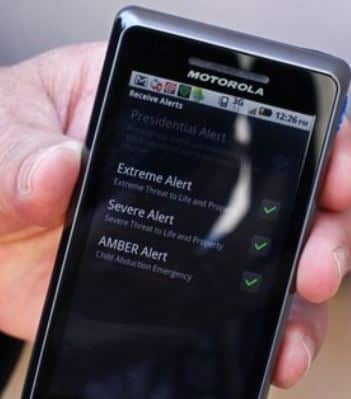FCC Updates Emergency Alert System

WASHINGTON — As Hurricane Ian raged through Florida Thursday, the Federal Communications Commission voted unanimously to make the emergency alerts seen and heard on television, radio and through text messages easier to understand.
“Climate change is making storms more frequent, more dangerous and more damaging. We need to respond in kind. That’s because keeping communications networks up and running can save lives. Ensuring they deliver the right emergency information to people at the right time can keep communities safe. So today we update our Emergency Alert System to make sure the messages it provides are clear for everyone,” said Chairwoman Jessica Rosenworcel.
The new rules adopted at September’s monthly meeting will implement a “Common Alerting Protocol” format, creating uniformity in the emergency messages sent out in times of crisis.
It will be clearer to Americans who the emergency alerts originate from. The new rules will ensure text messages have labels showing what type of alert it is, including “National Emergency Message.”
Broadcasters will be required to use the internet-based version of the alert.
“This is valuable because this version provides more details, like how those who receive it should respond to the emergency. These actions matter because they modernize a key system for disaster response. In light of the growing frequency of devastating weather events, it is essential we do so,” Rosenworcel said.
It also particularly helps those with disabilities. For example, people who are deaf and others who are hard of hearing will be able to access the same messages through text and other written materials.
Telecom companies will have six years to implement these changes, which is roughly the same time as the lifespan of a typical cable box, according to the commission.
“Our compliance timeline of six years is based on estimates of the typical time frames for replacement of cable set top boxes and similar devices that cable industry representatives have submitted to government agencies in the past. For example, NCTA has represented that the average set top box lifespan is five to seven years and that the average deployment cycle for set top boxes is six years,” the commission wrote in the order it adopted.
Overall, the commission believes the changes are vital for public safety.
“We conclude that the lifesaving benefits to the public of increased comprehensibility and accessibility of emergency information from the actions adopted in this order will far outweigh the implementation costs imposed on EAS participants,” the commission wrote.
Madeline can be reached at [email protected] and @MadelineHughes























